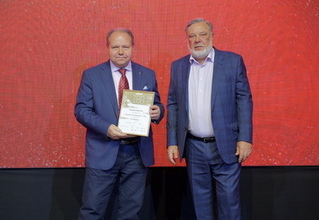THz AR Coatings
| Download THz AR Coatings Datasheet (PDF, 209 KB) |
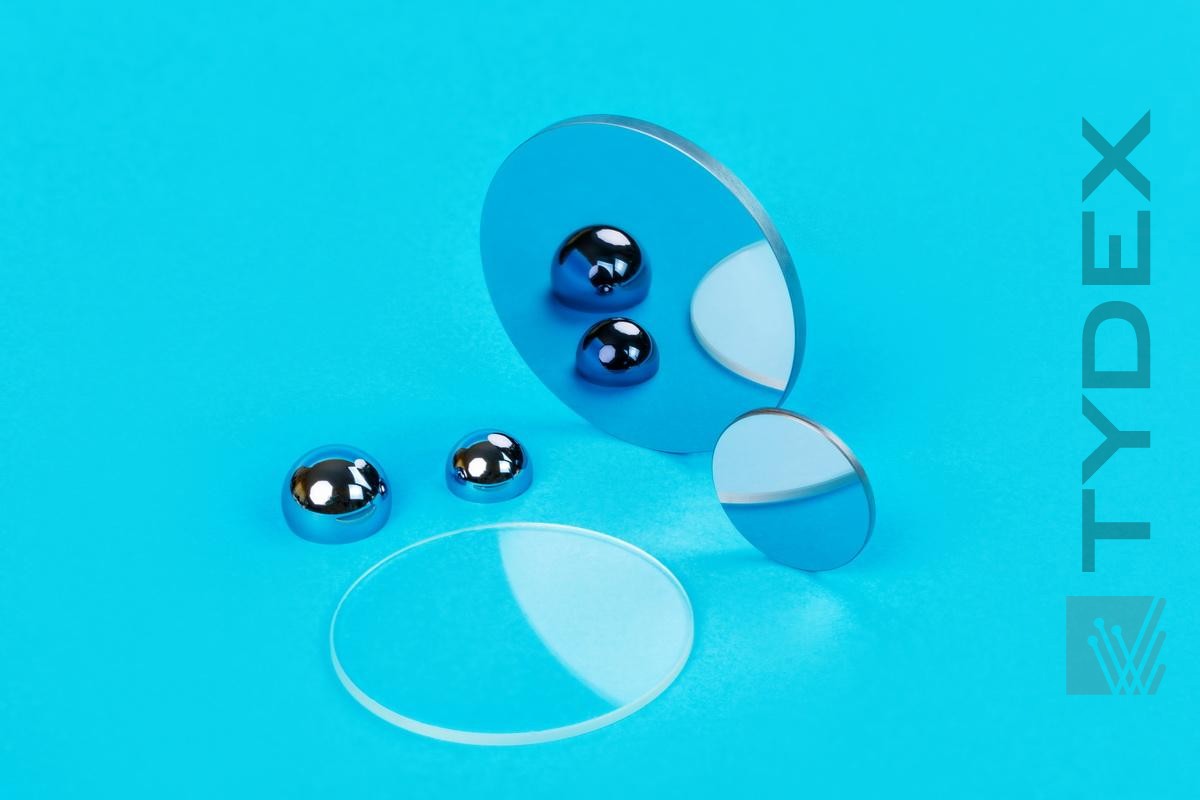
As it is known THz transmittance of crystalline materials is not high (transmittance of HRFZ-Si is only ~54% and of THz-grade crystal quartz is ~70%) due to high reflection losses. However, reflection losses can be reduced by THz AR coating. We offer parylene coatings.
Parylene coating technology for plane surfaces is well known in microelectronics. We have improved it to achieve coating on optical surfaces (plane as well as spherical ones). So parylene coatings are used for windows as well as for lenses.
AR coating wavelength range is specified by customer. It's possible to make AR coatings for ranges within the wide interval from 60 μm to 1300 μm.
The following AR coatings are offered:
1. Two-sided AR coating
It is used for windows and meniscus lenses. Due to AR coating transmittance is ≥90% at wavelength AR coating centered at. Examples of transmission curves of parylene coated and uncoated HRFZ-Si and crystal quartz windows are shown below.
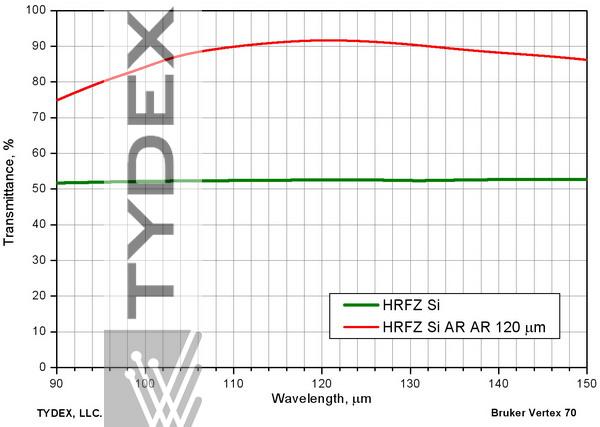
Fig. 1.А. Transmission of uncoated and two-sided coated HRFZ-Si windows. AR coating is centered at 120 µm.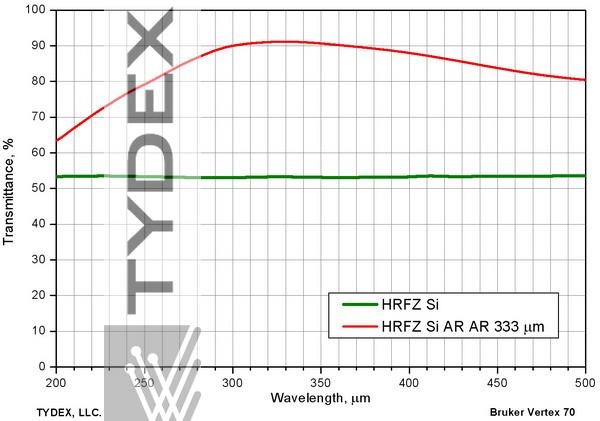
Fig. 1.В. Transmission of uncoated and two-sided coated HRFZ-Si windows. AR coating is centered at 330 µm.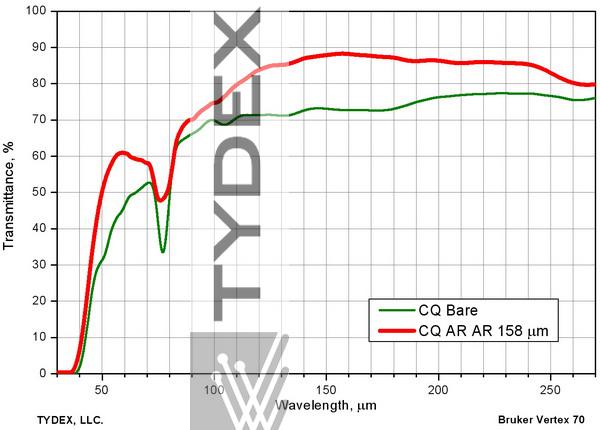
Fig. 1.С. Transmission of uncoated and two-sided coated crystal quartz windows. AR coating is centered at 158 µm.
It has been confirmed experimentally that parylene coated parts can be used at low temperatures.
A crystalline quartz window with two-sided coating centered at 860 μm underwent thermal cycling with the following parameters:
- cooling from room temperature to 77K, 30 cycles,
- cooling from room temperature to 4.2K, 3 cycles.
Transmittance spectra were measured before and after thermal cycling (fig. 2A). Parylene coating surface was studied under microscope (fig. 2.B)*. The film does not degrade under low temperatures. Transmittance stays constant. 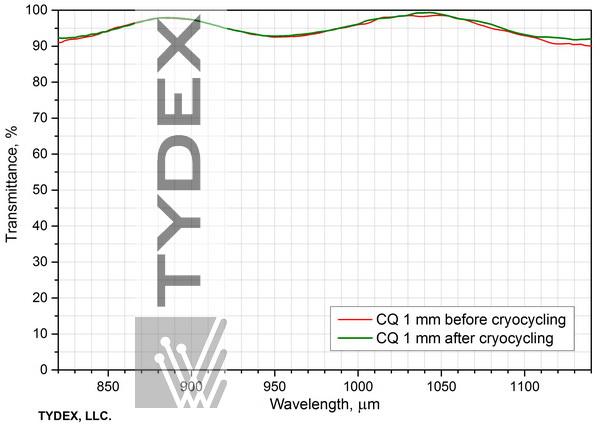
Fig. 2.А. Transmittance spectra of a crystalline window with two-sided coating before and after thermal cycling. *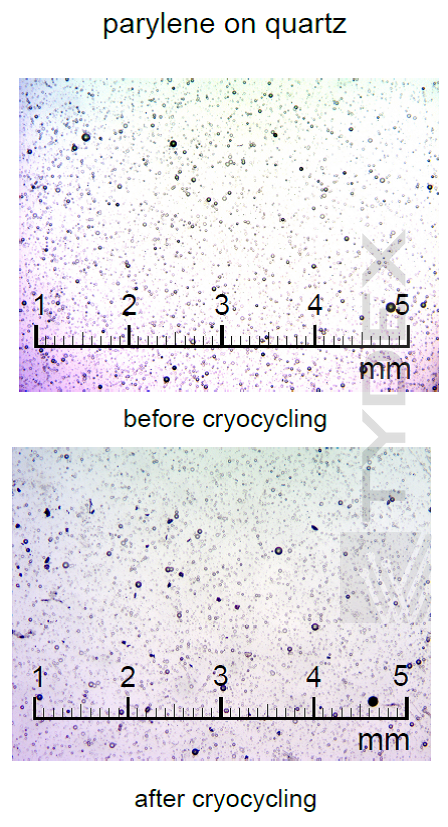
Fig. 2.В. Surface of a crystalline window with two-sided coating before and after thermal cycling. *
___________________
* The data was provided by Dr. Erik Heinz из Supracon AG, Germany
2. One-sided AR coating
Usually it is applied for hemispherical lenses. Plane lens surface is not coated since the lens is used as photoconductive antenna in THz TDS setup or in superconductive bolometer. Currently AR coating centered at the range of 99 um to 125 um is developed for some specific applications. AR coating increases transmittance of the hemispherical lens by 30 %. Since it's enough difficult to measure transmission of hemispherical lens due to its shape we have simulated transmission curves of AR coated and uncoated lenses (please see them below).
Experimental results achieved by one of our customers confirmed increasing of transmission due to AR coating. The gain in power in his instruments while using one-side coated hyper-hemispherical lens was about 30-50% at 111 um.
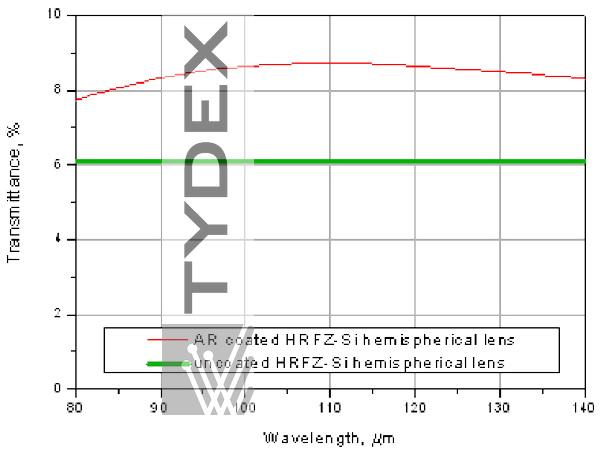
Fig. 3. Simulated transmission of uncoated and one-sided (spherical surface) parylene coated hemispherical lenses. AR coating is centered at 99-125 μm.
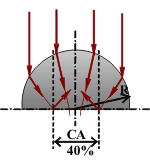 As you see transmittance of uncoated HRFZ-Si hemispherical lens is 6 % only. It is connected with the effect of total internal reflection. The angle of total internal reflection is about 17 deg. Due to high refractive index of silicon and lens geometry major part of penetrated into the lens THz radiation is reflected from plane lens surface-air interface. Therefore clear aperture of the hemispherical lens is 40% only.Taking into account specificity of wavelength range that customer needs we manufacture AR coated windows and lenses upon request and, as a rule, they aren't available from stock.
As you see transmittance of uncoated HRFZ-Si hemispherical lens is 6 % only. It is connected with the effect of total internal reflection. The angle of total internal reflection is about 17 deg. Due to high refractive index of silicon and lens geometry major part of penetrated into the lens THz radiation is reflected from plane lens surface-air interface. Therefore clear aperture of the hemispherical lens is 40% only.Taking into account specificity of wavelength range that customer needs we manufacture AR coated windows and lenses upon request and, as a rule, they aren't available from stock.
For price quotation and delivery please fill in our Request form.
Optics is ready to be shipped!
Optics Stock
Shipment/ Payment/ Warranty ...

